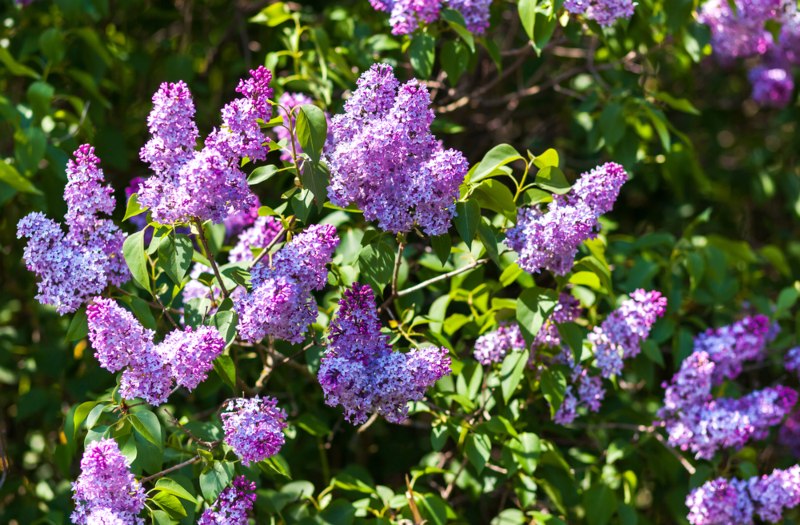
Lilacs are classic cottage plants that produce some of the most fragrant and loved blooms.
Their tightly packed clusters of small flowers are available in hues of purple, blue, pink, and white, and have a popular aroma used to scent various products.
Even though lilacs are usually reliable when it comes to blooms, there are some things that can interfere with the plant’s ability to flower.
The good news is that the following tips can help get lilacs to bloom and fill your garden with those sweet-smelling flowers.

Sun Is Important To Lilac Blooms
Lilacs need at least 6 hours of sunlight in order to produce blooms.
If the plant doesn’t receive that much needed light, it won’t be able to produce those fragrant blooms.
If your lilac isn’t getting that amount of sunlight, you can transplant it to a sunnier location or prune some branches to thin the plant and allow more sunlight to reach its foliage.
Keep in mind, however, that if you do transplant the lilac, that can cause the blooms to be delayed for another year.
Prune Lilacs Properly

During early spring, prune off any damaged or dead wood, but take care not to do an abundance of pruning. Too much pruning can lead to the removal of dormant flower buds, which will reduce the amount of blooms the lilac produces.
Once the flowers are spent, however, you can perform a more thorough pruning. You should also consider pruning any suckers spreading out away from the plant.
Lilac suckers are new plants that can spread out around the bush. Any suckers near the base of the lilac should be left as you will want a mixture of old stems and new stems for a healthy lilac.
Don’t Let Lilacs Dry Out
Not receiving enough water can cause lilacs to become stressed, which stunts growth and prevents flowering. Most of the time, lilacs won’t need much supplemental watering.
During periods of little to no rain, however, you will need to give thirsty lilacs a drink. Mulching around the lilac can also help keep moisture around the roots while protecting them from extreme temperature fluctuations.
Avoid An Excessive Amount Of Nitrogen
While nitrogen is an important element for most plants, too much can cause problems for lilacs. Nitrogen encourages foliage growth, which isn’t always a bad thing.
However, too much nitrogen will encourage lilacs to produce an abundance of leaves, but little blooms.
Instead, select a fertilizer that is designed for lilacs or ones with a low nitrogen level.
The Lilac Isn’t Old Enough

Some lilacs won’t produce blooms until they are a few years old, and even when they do bloom there aren’t many. As the plant ages, however, it will become a much more reliable bloomer, filling the plant with an abundance of those fragrant flowers. If you have a young lilac that isn’t blooming, just continue to provide proper care and try to be patient.
Prep The Lilac For Next Year
One of the most important things you as a gardener can do for your lilacs is to prepare them for the next year. Not only does this help keep the plant healthy, it also promotes blooms for next year. Make sure to prune off any spent blooms or dead wood after the plant’s growing period.
Another tip is to add some salt to the lilac during its dormancy period, which is late fall to early spring. This can be done by mixing one gallon of warm water with two ounces of Epsom salts. Stir until the salt is completely dissolved. Pour the mixture around the lilac. The salt will help give the plant a boost and encourage more blooms during the up-coming growing season.






